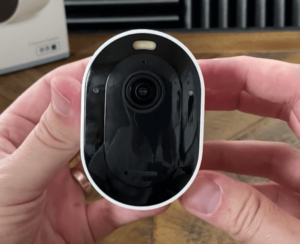An indoor security camera might sound a little sketch, but it’s very useful and usually lawful to have one
Legally, in most places in the United States, you can have a hidden camera in your house. But you can’t record audio and don’t put the camera in place with a “reasonable expectation of privacy.” Like the bathroom, for instance.
- Motion detection
- Sound detection
- Pan and tilt
- Brand
- Subscription
- Standalone or part of a system
First off, motion detection. If an indoor security camera doesn’t have motion detection, skip it. There’s little point in getting a camera that won’t alert you when someone walks past it.
Some motion detection is more advanced than others. Some cameras have more specific detection capabilities: person detection, pet detection, package detection, and so on. It’s nice to get notifications that tell you exactly what kind of motion is detected—but it’s not 100% necessary, especially inside your home.
Then there’s sound detection. Sound detection is exactly what it sounds like—it picks up on loud noises, like glass breaking or your smoke alarm. Some cameras also pick up on targeted noises, like pet or baby sounds. While noise detection is a bad idea for outdoor cameras, it’s an excellent idea for a controlled, indoor environment. If something loud happens inside your home, chances are, you want to hear about it.
It’s also great to have pan and a tilt aka an indoor camera that can move around. That way, the camera’s not stuck looking at just one angle. Pan and tilt is sometimes paired with sound detection, so that if your camera hears something, it can turn to face that noise.
Some people are brand evangelists, and we understand their position. Take, for instance, Google and Nest products. Although neither the Google Nest Cam Indoor nor Google Nest Cam IQ Indoor made our top five this time, they’re both good indoor cameras.
Nest Cams have some of the leading cameras and advanced features like facial recognition. (Although you need to get a Nest Aware subscription to take full advantage of a Nest camera.) They’re also compatible with other Nest or Google smart home tech you might have, like a Nest Hub. So if you’re already deep into one smart home brand, you might simply want to buy that brand’s cameras for consistency.
What about a features or cloud storage subscription? There are plenty of indoor security cameras that you can use without a subscription. Some features you can use without a subscription for most cameras include push notifications, live video streaming and two-way audio. You'll miss out on additional services like professional monitoring without a subscription plan.
Companies like Arlo, Ring, and Nest generally require monthly fees for cloud and security features. But brands like Reolink and Eufy don't require a subscription.
All of the cameras we recommend in this piece are standalone, but you may want to consider getting a camera that’s part of a company’s smart home suite. Otherwise, there’s no guarantee that your smart indoor security camera will work with your security system.
You might be able to connect them both to a hub or assistant like the Amazon Echo. But they likely won’t communicate directly with each other.
One final note: it’s crucial to recognize that an indoor security camera may have different features than an outdoor security camera. Indoor and outdoor security cameras are vastly different from each other.
Functionwise, an indoor security camera is often used to watch kids or pets when the homeowner is gone. An outdoor security camera is usually used to deter burglars and other intruders.
Featurewise, indoor security cameras typically aren’t rated for outdoor use, and the features are usually more basic. Outdoor security cameras are rated for weather resistance. They also tend to have more security-focused features, like lights, sirens, and package detection.
Okay, that’s enough for now. Let’s talk about the cameras we recommend.







